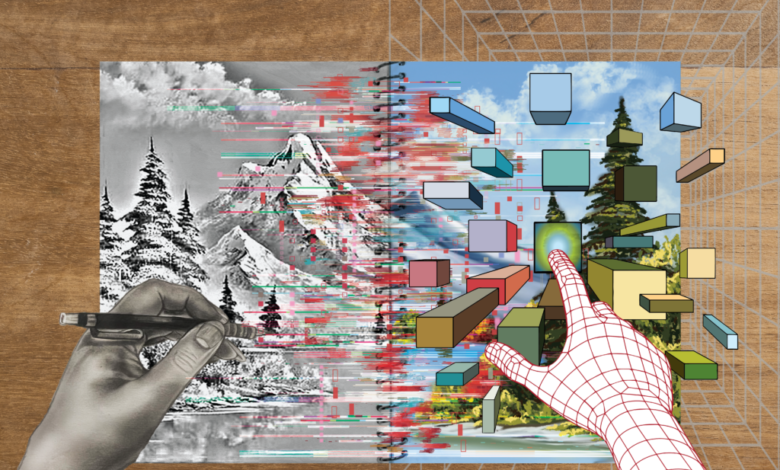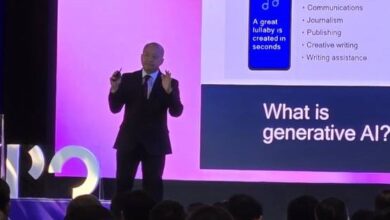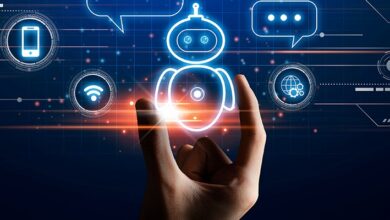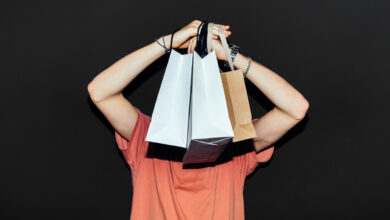Generative AI and Creativity – UGA Today

As artificial intelligence evolves, the conversations about AI and creativity are becoming more complex. Is creativity something we can study and evolve in a computer, an innate ability unique to human minds, or something in between?
Researchers often link creative potential to the power of memory. Anna Abraham, the director at the Torrance Center for Creativity and Talent Development, has argued that semantic memory—our long-term memory storage for foundational knowledge—is the root of imagination. Her research proposes that we cultivate our imaginations using our experiences of the world.
“Creativity comes into being when we combine what we know in new ways,” says Abraham. “If you have a concept of the color gold and a concept of an elephant, even though you’ve never seen a gold elephant, you can imagine it based on combining what you know about its separate elements.”
Some scholars believe that advanced AI tools also have semantic memory. How else do we describe the immense databases of conversational jargon and personal chats they use to evolve language? This potentially infinite backlog in AI systems means that human issues like memory loss or a lack of inspiration don’t affect productivity. If you want an image of a gold elephant or a story about one, you simply type in the prompt to tools like:
- Copy.ai
- ChatGPT
- Jasper AI
- DALL-E
- Murf
These programs can craft stories, edit copy, create voiceovers and generate images and videos. They “remember” previous prompts and use that data to develop better products. Now, researchers are asking if these AI tools are boosting innovation or reducing our creative impulses?
How is AI used in creative writing?
It is no longer a question of whether writers use generative AI but when in the process. Professional writers and students alike use AI tools like Wordtune and the Microsoft spelling and grammar feature to check for minor mistakes and finetune sentence structure. Writesonic, Anyword and Jasper are some of the popular programs that can create content from scratch.
But crafting a well-written creative piece using AI is more than asking it to “write a best-selling novel” or “create an A+ essay.” A writer from Guardian US experimented with using ChatGPT to create movie scripts after the Writers Guild of America allowed the use of AI for professional submissions.Using prompts like “write me the outline for a movie that will make billions of dollars theatrically” and “write me an Oscar-winning movie,” ChatGPT came up with detailed plots, dialogue, song lyrics and even witty one-liners for a new Marvel Avengers movie.
- Thor: “Your conqueror game is weak, Kang. You should stick to playing with your toys.”
- Captain America: “You may be a conqueror, but you’ll never conquer our spirit.”
- Hulk: “Kang, you wouldn’t like me when I’m angry. Oh wait, you already don’t like me.”
Unsurprisingly, The Guardian writer found the dialogue underwhelming, but he agreed that the software was useful for generating plot ideas and helping to navigate outlines.
Author Rie Kudan recently caused a stir in the literary world when she won Japan’s most prestigious book award, the Akutagawa Prize, for a novel in which she used generative AI. Kudan’s book takes place in a futuristic world where AI is commonplace. She used real-life AI responses to make the AI in her book more realistic but says that she made “appropriate modifications to the story” to make it her own.
Even with the use of AI tools, the quality of the creative work relies on the talent of the author. Though the members of the judging committee wished they knew in advance about the use of AI, they still praised Kudan’s work as “flawless” and “highly entertaining.”
Should AI art be considered “art”?
As AI technology continues to advance, so do the ethical and legal dilemmas involved with using it to create art. Is it creativity or plagiarism?
According to a study from Everypixel Journal, text-to-image algorithms created more than 15 billion images between 2022 and 2023. These images are on social media, website ads, presentations and online marketplaces. They are unavoidable. Artists like Dapo Adeola believes that this surge of AI art “devalues illustration,” but others are experimenting with how this technology can push the creative boundaries of what it means to be an artist.
In 2018, an AI-generated portrait sold for $432,500 at the world-renowned Christie’s auction house. A collective of artists and researchers created the “painting” using an algorithm that pulled data from 15,000 portraits painted between the 14th century to the 20th.
Hugo Caselles-Dupre, one of the researchers who helped create the portrait, says, “If the artist is the one that creates the image, then that would be the machine. If the artist is the one that holds the vision and wants to share the message, then that would be us.”
Using AI for Creativity
As AI and creativity continue to walk hand-in-hand, Abraham cautions creatives against becoming too dependent on AI tools. But she also knows of avid users who vouch for how generative AI has boosted their intellectual curiosity and helped them overcome obstacles, like mental blocks.
“Like most things, it can be potentially helpful to some until you get to a certain point,” says Abraham. “It’s important to distinguish between tools that make manual labor easier, like a typewriter, from tools that have the potential to deskill us cognitively when we remove the need to develop a complex ability ourselves.”
Choosing to develop basic creative skills is a crucial part of improving any potential or talent. Using AI can help people who have little knowledge at the beginning of their journey or help streamline tasks once they’ve become an expert. But whether using Pinterest to generate color palettes or ChatGPT to jumpstart new ideas, moderation seems to be the key to growing an artist’s creative potential.
“The human brain and AI technology might seem to create a similar product, but the process underlying that generation is entirely different,” says Abraham. “The skill development and the sense of fulfillment, frustration and purpose that we experience as humans when creating art are not experiences that can be replicated by artificial intelligence. That is what it means to be human.”



